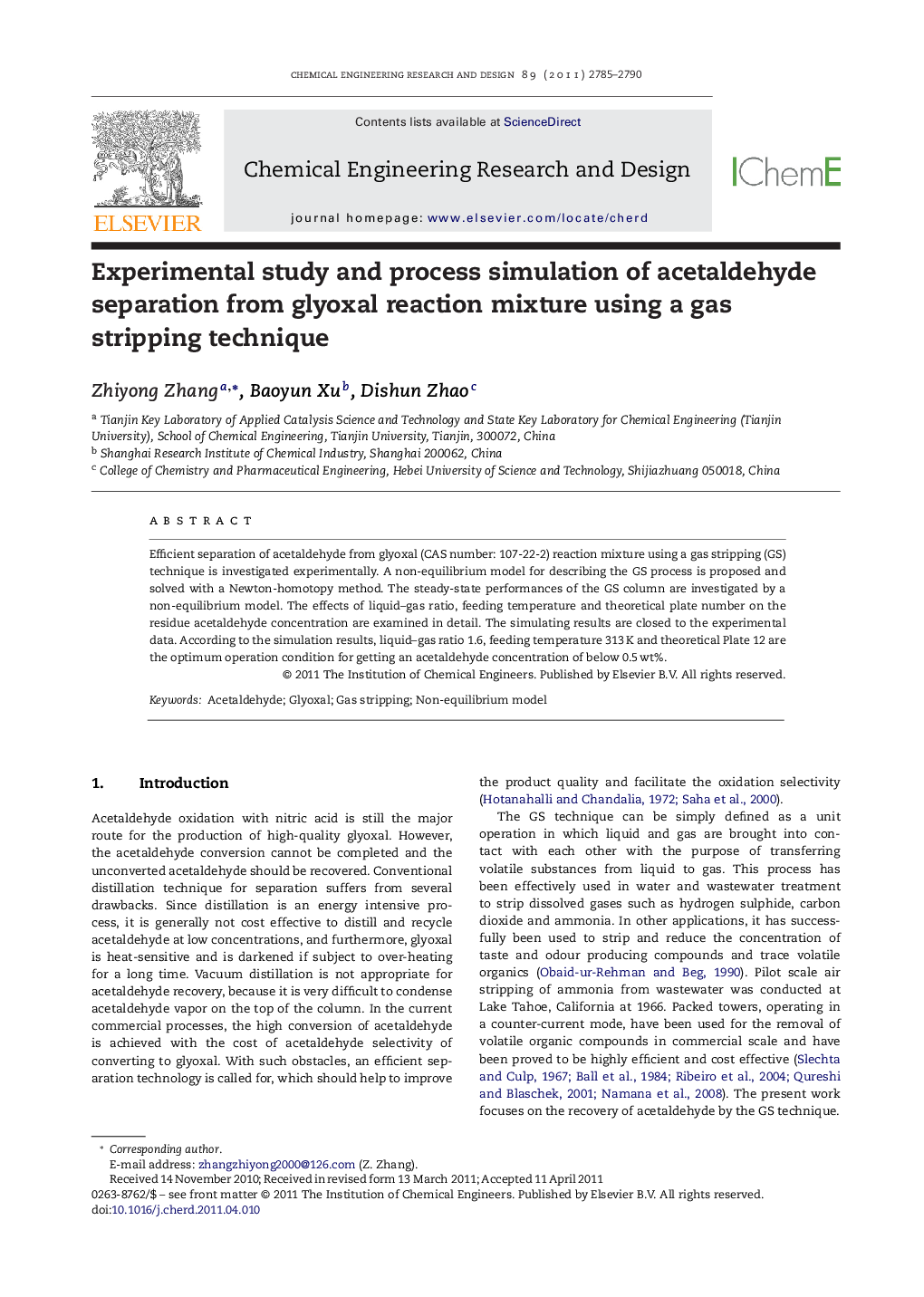| Article ID | Journal | Published Year | Pages | File Type |
|---|---|---|---|---|
| 621955 | Chemical Engineering Research and Design | 2011 | 6 Pages |
Efficient separation of acetaldehyde from glyoxal (CAS number: 107-22-2) reaction mixture using a gas stripping (GS) technique is investigated experimentally. A non-equilibrium model for describing the GS process is proposed and solved with a Newton-homotopy method. The steady-state performances of the GS column are investigated by a non-equilibrium model. The effects of liquid–gas ratio, feeding temperature and theoretical plate number on the residue acetaldehyde concentration are examined in detail. The simulating results are closed to the experimental data. According to the simulation results, liquid–gas ratio 1.6, feeding temperature 313 K and theoretical Plate 12 are the optimum operation condition for getting an acetaldehyde concentration of below 0.5 wt%.
► The gas stripping (GS) technique is first proposed to remove the acetaldehyde unreacted in the production of high-quality glyoxal produced by the method of nitric acid oxidation of acetaldehyde. The method can avoid the drawbacks existed in the conventional distillation technique. ► The mathematics model of the GS process is founded and solved with a Newton- Homotopy method. A good agreement between calculated curve and the experimental points is observed from the comparison chart of experimental and simulation results. ► The steady-state performances of the GS column are investigated with the non-equilibrium model deeply. The optimum operation conditions for getting an acetaldehyde concentration of below 0.5 wt% are obtained.
